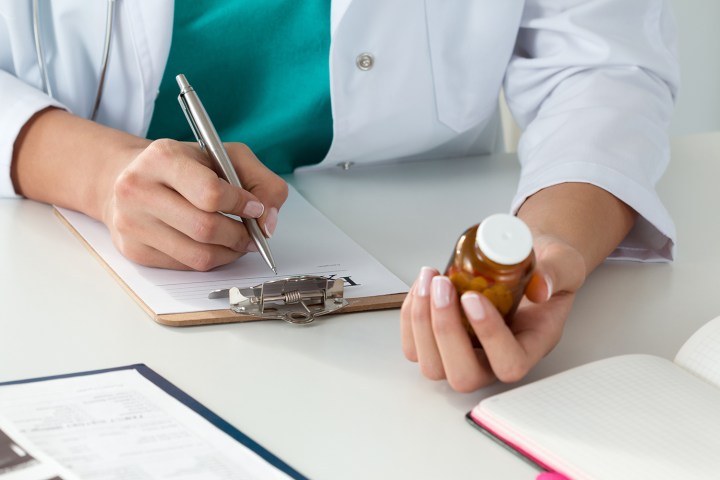
As a 2017 Center for Disease Control (CDC) report explained, a woman died in a Nevada hospital after contracting an infection from carbapenem-resistant Enterobacteriaceae (CRE). This “super bacteria” was resistant to all 26 antibiotics available in the United States.
Although the Nevada case may have been a wake-up call for some in the United States, for years now, researchers have been watching the crisis grow worldwide. In 2014, Dr. Keiji Fukuda, the Assistant Director for Health Security at the World Health Organization (WHO), warned of the already present danger, saying “Without urgent, coordinated action by many stakeholders, the world is headed for a post-antibiotic era, in which common infections and minor injuries which have been treatable for decades can once again kill.”
The CDC estimates that there are more than 23,000 deaths in the United States each year due to antibiotic resistant bacteria. India — where the Nevada woman was traveling when she sustained her fatal injury — has the highest rate of resistance to E. Coli in the world, according to the Center for Disease Dynamics, Economics, and Policy. In China, resistance to the drug colistin is spreading. This is particularly troubling, as colistin is already considered a last resort; it is an old drug which can cause kidney damage, and physicians only pulled it out of retirement because modern drugs have become steadily less effective.
Antibiotic resistance will continue to spread, and it represents one of the great health crises of our time. Thankfully, there are researchers working to stop it.
A genetic solution
“Bacteria will develop resistance to any one antibiotic or antimicrobial given enough time,” Dr. Bruce Geller, a professor of microbiology at Oregon State University, told Digital Trends. “Because they’ve had a 4 billion year head start in the evolution of mechanisms to adapt to changing environments, they’re very, very good at getting around any antimicrobial they might encounter.”
For years, biologists like Geller have been playing evolutionary whack-a-mole with bacteria. Although researchers are armed with the collective knowledge of the scientific community, bacteria have the cunning flexibility of nature. For every tool humans use against them, bacteria develop a countermeasure. While antibiotics were a revolution in medicine, the moment we first employed them, bacteria began to reshape themselves.

Geller is exploring a unique approach: rather than developing yet another way to kill bacteria — to which they will eventually become resistant — why not make them vulnerable to already existing antibiotics again?
To this end, Geller’s weapons of choice are synthetic molecules called peptide-conjugated phosphorodiamidate morpholino oligomers — PPMOs, for short. As you may have guessed from the outrageously long name, PPMOs are fairly complex; to understand how they work, you first need to wrap your head around how antibiotics work, and how bacteria have learned to fight them off.
How bacteria and antibiotics function
Bacteria are microscopic, single-celled organisms that come in a variety of shapes. Like other single-celled organisms, bacteria cells have a cell wall surrounding them; in bacteria specifically, these walls contain a substance called peptidoglycan, and this can be essential to the use of antibiotics.
An antibiotic is designed to destroy microorganisms like bacteria. For an antibiotic to work effectively, it must kill bacteria cells without destroying human cells, so biologists engineer antibiotics to target aspects unique to bacteria cells. For example, penicillin prevents the peptidoglycan in bacteria cells from linking, leaving the cell walls weak and prone to collapse. Another class of antibiotics – sulfonamides — inhibits the ability of cells to produce folic acid. This is fine for human cells, which can absorb folic acid from outside sources, but it means death for bacteria cells, which must produce folic acid on their own. A third type of antibiotic, tetracycline, inhibits protein synthesis in cells but doesn’t accumulate in human cells enough to harm them.
However inventive antibiotics might be, bacteria always adapt. Some use protein structures called “efflux pumps” to push antibiotics out of their cells. Others can rearrange themselves, effectively hiding parts of the cell that are vulnerable to antibiotics. Still others produce enzymes — such as Geller’s target, New Delhi metallo-beta-lactamase (NDM-1) — that can neutralize antibiotics.
The human gut alone holds more bacteria than there are cells in the human body.
As if the mercurial nature of bacteria were not frightening enough, researchers must contend with the fact that bacteria also have a useful, if unwitting, accomplice: us. Resistance develops and spreads through natural, evolutionary processes, but human behavior gives it a helpful nudge.
How does resistance develop? Some bacteria cells develop random mutations that result in these resistance mechanisms. When a round of antibiotics kills a population of bacteria, resistant cells are left alive, able to reproduce. Making matters worse, non-resistant bacteria can acquire resistance from cells that have it, receiving a copy of the gene that provides the resistance mechanism.
This process is entirely natural — bacteria will inevitably develop resistance to an antibiotic used against them — but it moves faster due to human behavior. The first trend that has accelerated the spread of resistance is that society simply uses too many antibiotics. A report by the CDC estimates that at least 30 percent of antibiotic prescriptions in the U.S. are unnecessary; many of these prescriptions go to patients suffering from viral infections, against which antibiotics are completely useless!
Despite our obsession with hygiene, humans are walking bacteria farms. The human gut alone holds more bacteria than there are cells in the human body. When a patient takes antibiotics, the bacteria in his or her intestines can develop resistances, which can then spread to other people.
People aren’t the only creatures taking an excess amount of antibiotics; even farm animals have contributed to the problem. For years, farmers have given antibiotics to food animals such as cows, chickens, and pigs. Not only does this keep the livestock healthy (sick animals are bad for business) but antibiotic use has also been shown to increase the growth of these animals. Good news for farmers, but terrible for anyone worried about the rise of superbacteria. The Food and Drug Administration has been trying to curtail the use of antibiotics in livestock, cracking down on growth promotion.
The wonderful world of PPMOs
Changing societal behavior is often a slow and difficult process. The CDC hopes to cut down on antibiotic prescriptions by 15 percent over the next few years, an ambitious goal given how often patients demand prescriptions for their ailments. Thanks to the work of researchers like Geller, the war on bacteria may flip without sweeping reforms.
Geller’s megaweapon is a PPMO designed to neutralize resistance mechanisms in bacteria, leaving them vulnerable to antibiotics. “This molecule can restore sensitivity to standard, already-approved antibiotics in bacteria that are now resistant to those antibiotics,” Geller says, which eliminates the need to invest time and money in developing new antibiotics. So how does this PPMO work?

A PPMO is a type of synthetic molecule that mimics DNA and can bind to the ribonucleic acid (RNA) of a cell. RNA takes the information stored in the DNA of a cell, translating it into proteins that carry out the various functions of that cell.
Imagine a gene as instructions, written in a letter. Normally, the RNA receives this letter and carries out the instructions, creating the appropriate proteins. The PPMO instead intercepts the letter along the way, replacing it with one that commands the RNA to do nothing. So Geller’s team can create a PPMO that binds to the gene that produces NDM-1 — an enzyme that neutralizes antibiotics — and silences it. Suddenly, the bacterium has no defense mechanism.
“Most standard antibiotics don’t target genes or gene expression, they bind to cellular structures like ribosomes or membranes,” Geller explains. “Our approach is to target the genes themselves, or more specifically, target the messenger RNA that’s made from the genes. Our molecules bind to a specific messenger RNA, and that prevents its translation into protein.”
Although the PPMOs are synthetic, they are not conjured from “earth, wind, and fire,” as Geller puts it. The process begins, as many a great night does, with brewer’s yeast. Chemists take the yeast from fermentation vats and extract the DNA.
Geller’s team can create a PPMO that binds to the gene that produces NDM-1 — an enzyme that neutralizes antibiotics — and silences it.
Chemists then break the DNA down, extracting some of the more valuable parts, and use their pieces as the building blocks of the molecule. Although bacteria are the target for the molecule, they are not the only obstacle it faces. The human body, with all its natural defenses, poses a threat, so the chemists make modifications to the resulting compound, protecting it from the enzymes in the human body that could disintegrate it.
The process may sound time-consuming, but it’s actually remarkably quick. “The real beauty of this technology,” Geller says, “is that it really shortens the discovery time for a new drug. One of the most time-consuming and laborious steps in drug development is discovery. When scientists go out and try to discover a new drug, it can take many years before they find a hit, something that they think might be a good medicine.” Since the PPMO “can really target any gene, all we have to do is change the sequence of our oligomer; we can make a new drug in a matter of days, if not hours.”
Geller has been working on his research since 2001, and the results did not come easily. He works with Gram-positive bacteria, which have a thick peptidoglycan layer in their cell walls. Early in his research, his molecules — which were then just PMOs — could not penetrate the cell walls. How did he eventually break through?

If you’re a medieval warlord trying to crack a fortress, you use a trebuchet. Geller settled for peptides. His team attached membrane-penetrating peptides to the PMOs — creating PPMOs — allowing them to pierce the cell wall. Once inside, the molecule gets to work, binding to RNA and stopping it from translating genes.
Perhaps the most useful aspect of the PPMO is that, because it silences a gene rather than directly killing the bacteria, it could be less likely to trigger resistance mechanisms. To be safe, Geller thinks physicians should play the odds, using two antimicrobials or compounds in unison, to lessen the chances that any bacterium will survive treatment.
Nothing is perfect
Despite their virtues, PPMOs are not without flaws. For starters, Geller’s team has observed bacteria displaying resistance to the peptide portion of the molecule. The strength and frequency of resistance differs greatly based on the peptide used.
Beyond the cellular level, there are other drawbacks. Geller emphasizes that they are not broad-spectrum solutions; because a PPMO is designed to target a specific gene, a physician will need to know the exact affliction. In cases where a patient has a long-term illness, like tuberculosis, a doctor would know exactly what to target. If the physician is unsure what the cause of illness is, the PPMO would be virtually useless.
Finally, Geller’s project faces the same constraints that any medical research does: time and money. Although his team can produce a PPMO quickly, Geller points out that the molecule will be subject to the same regulatory process that any drug must go through before it can be used on humans. “It takes many years to actually test these compounds and develop them to make them effective and safe, so that they can be ultimately tested in humans,” he says. “We’re still in the development stage.”
The testing process will last as long as it needs to, but the sword above our heads is dangling ever more precariously. The fight against super bacteria is not new; humanity’s front has been inching back for years now, and the enemy is crawling over the gates. It will take all the ingenuity of the medical world to stem the tide, and without wise decision-making from politicians and society at large, even that may not be enough.


